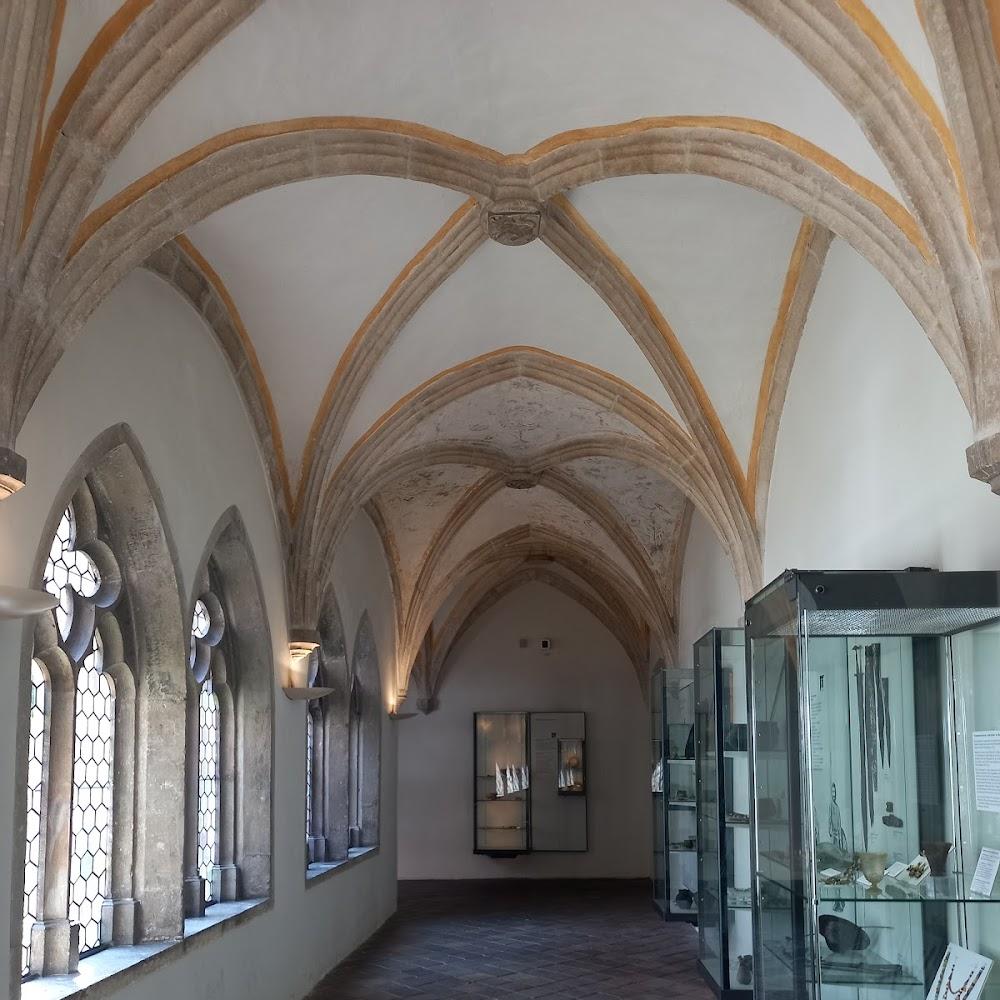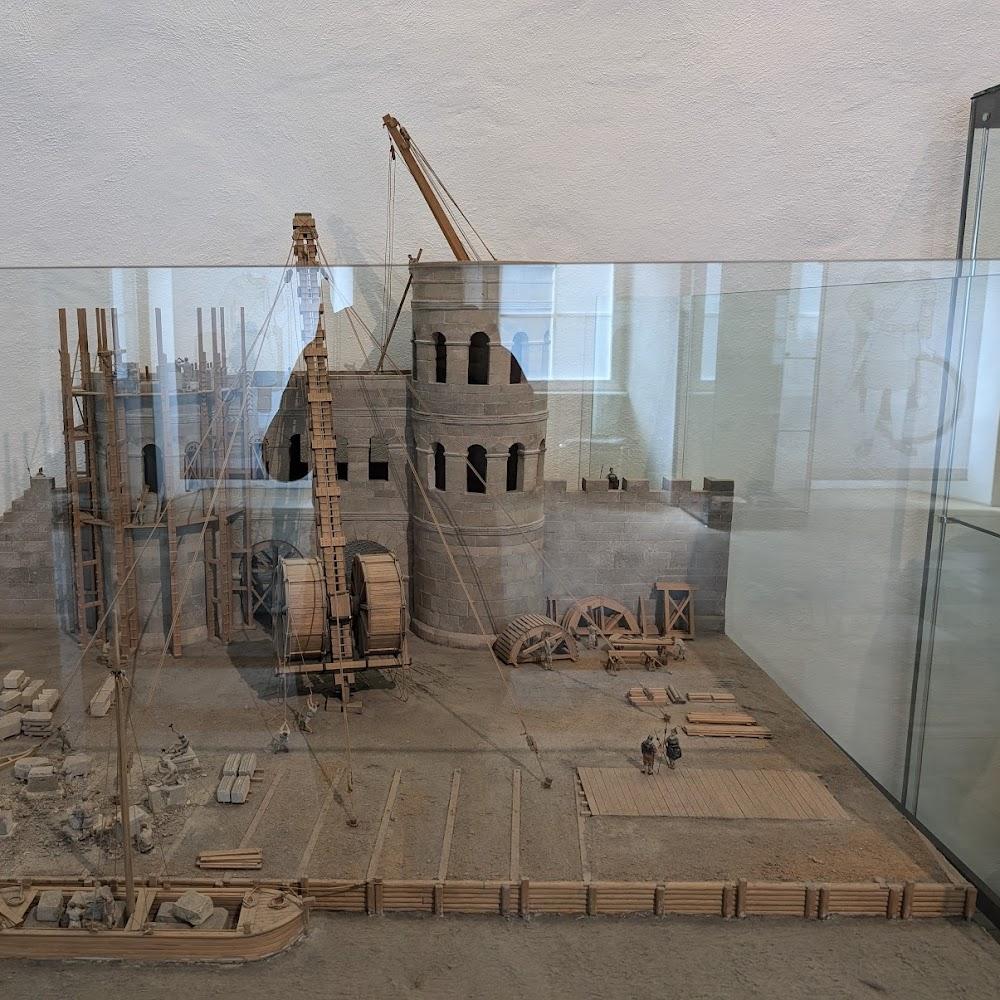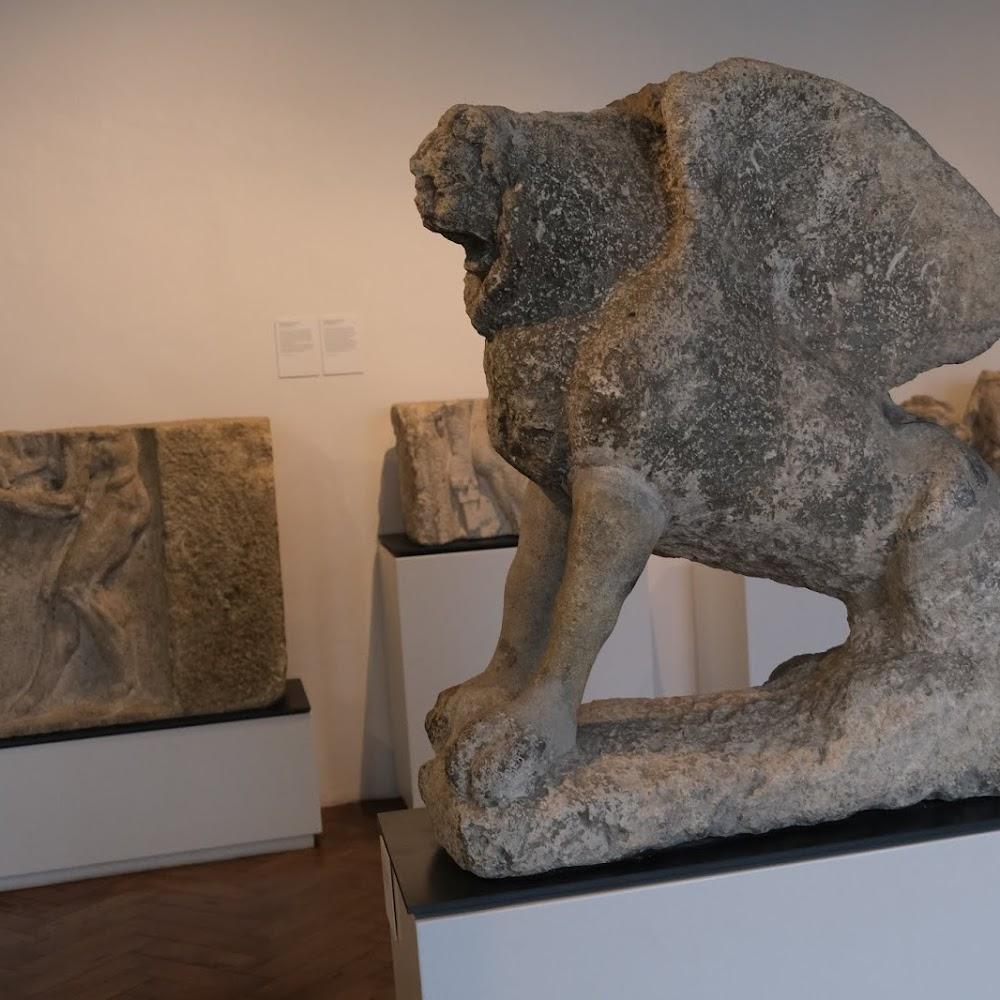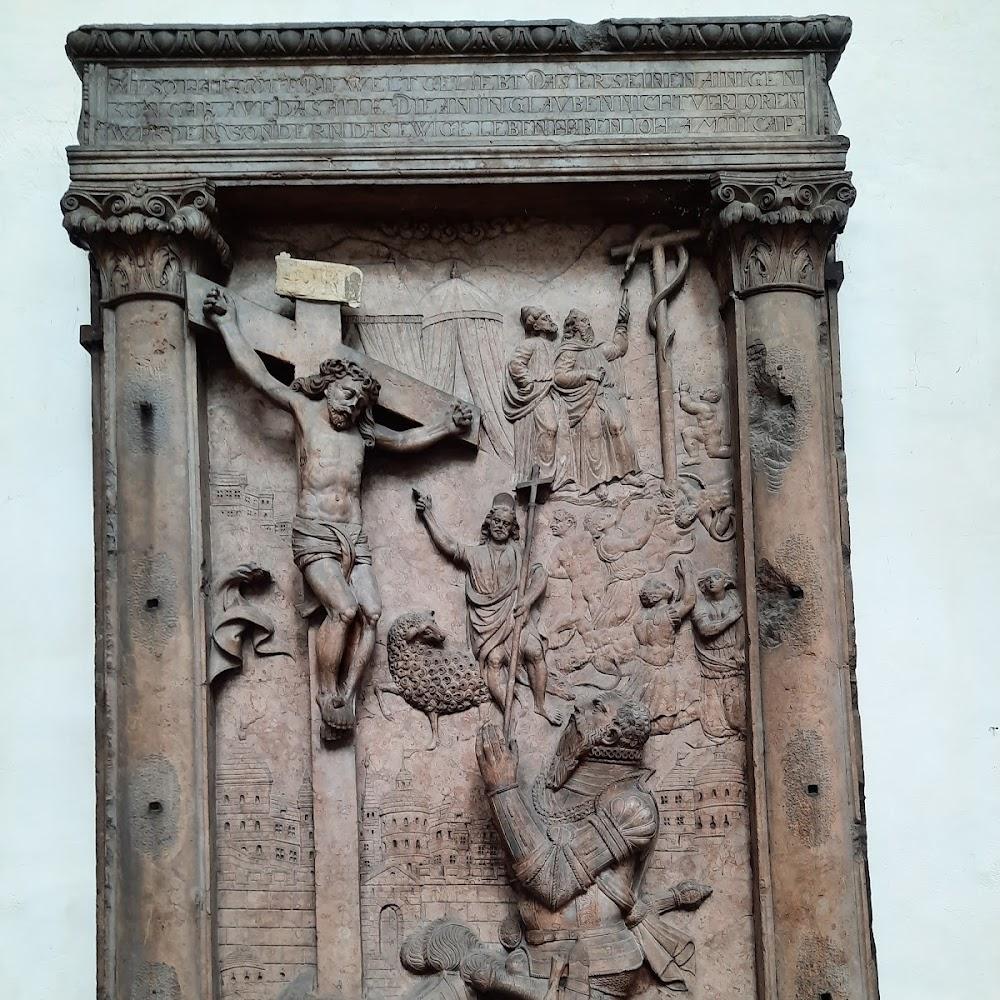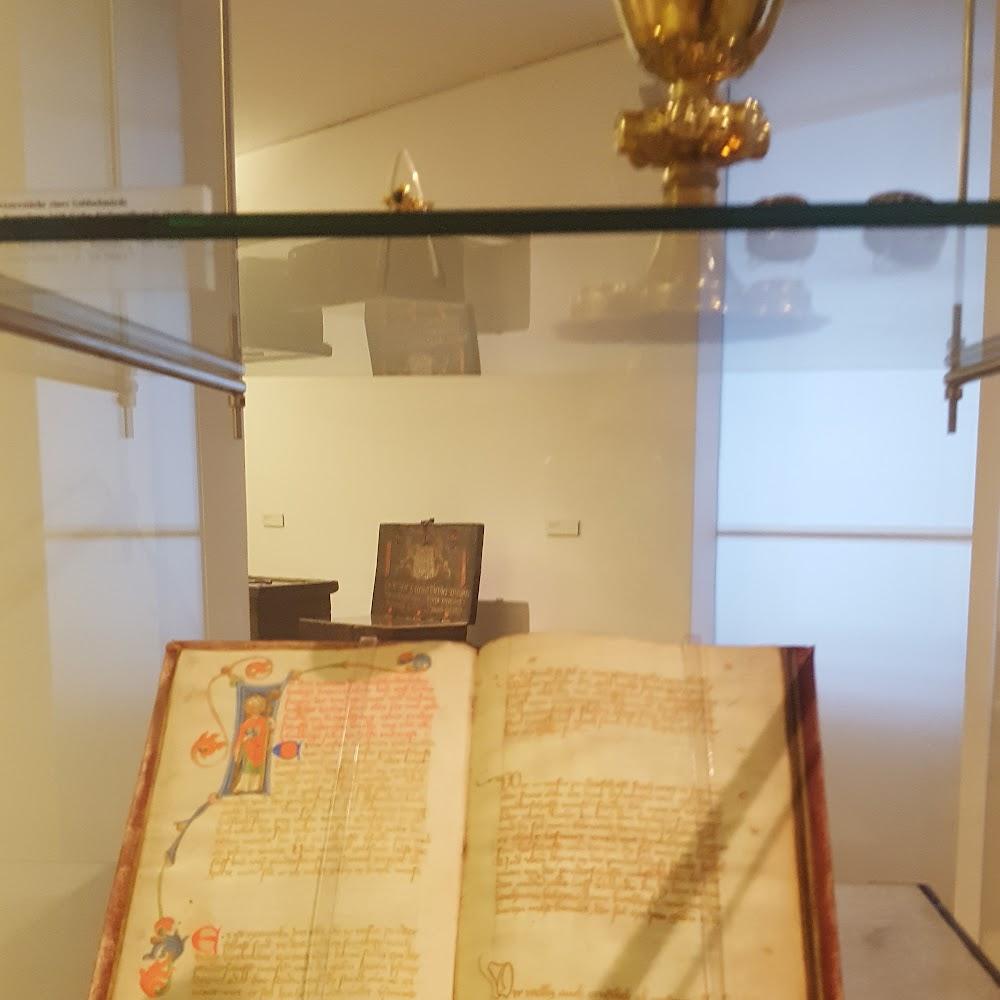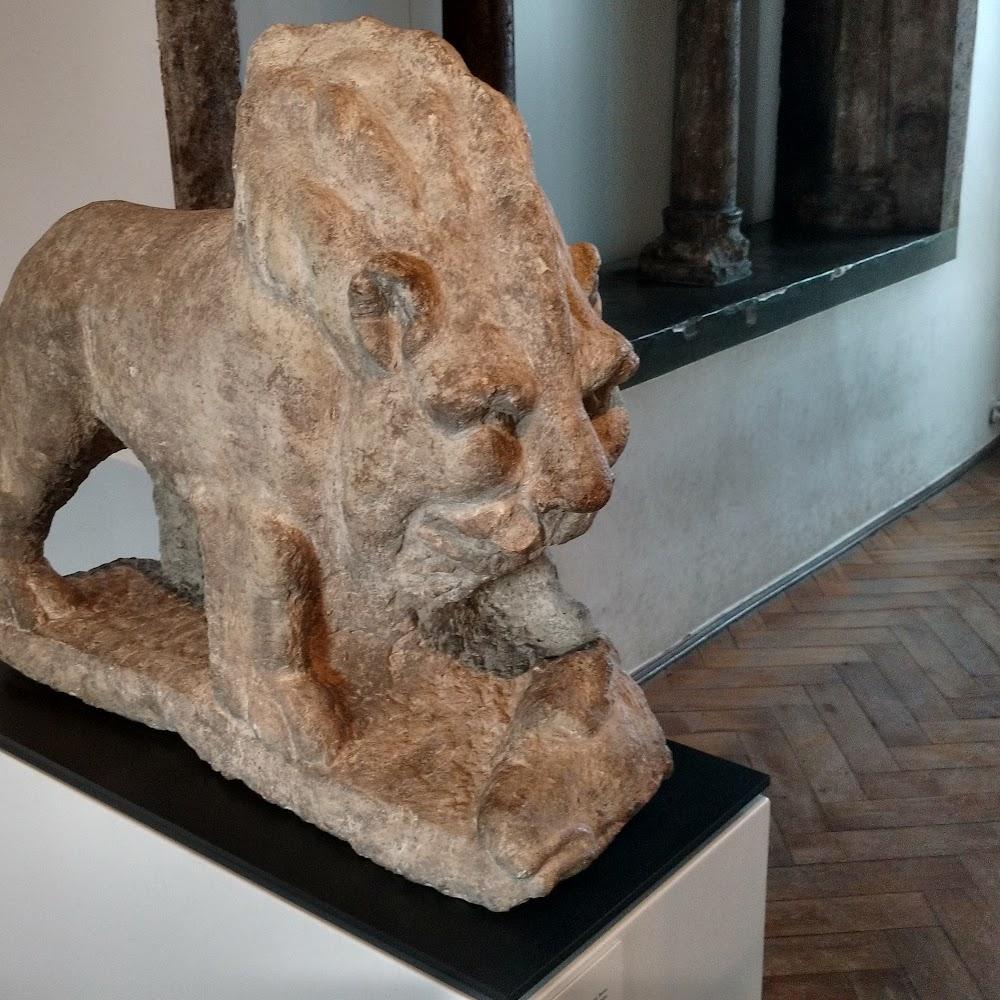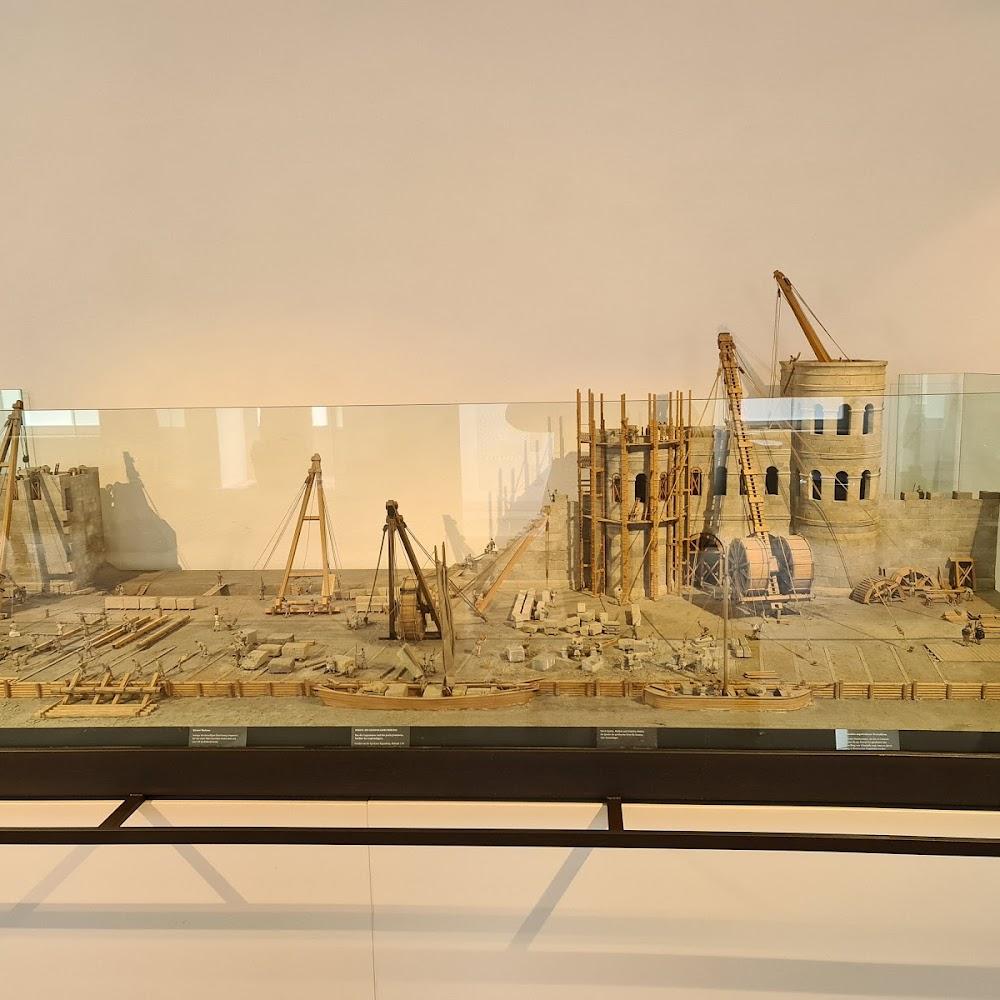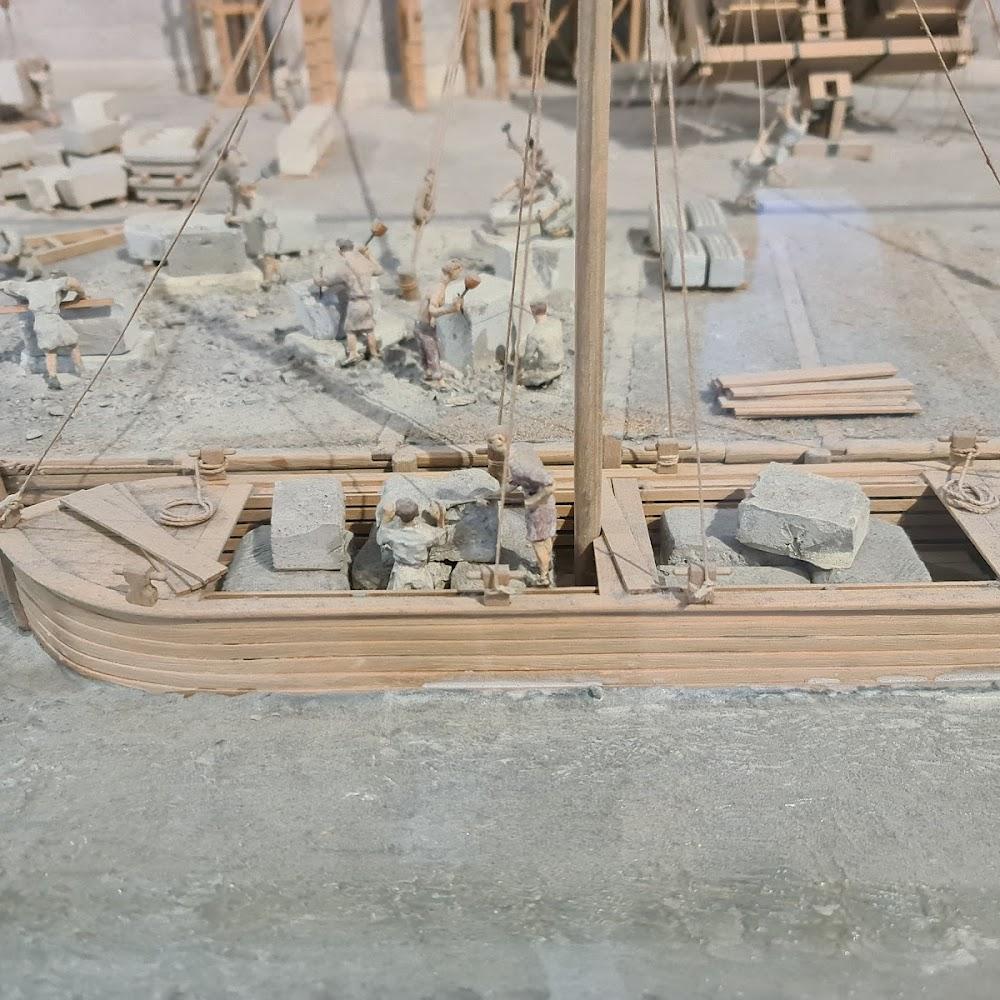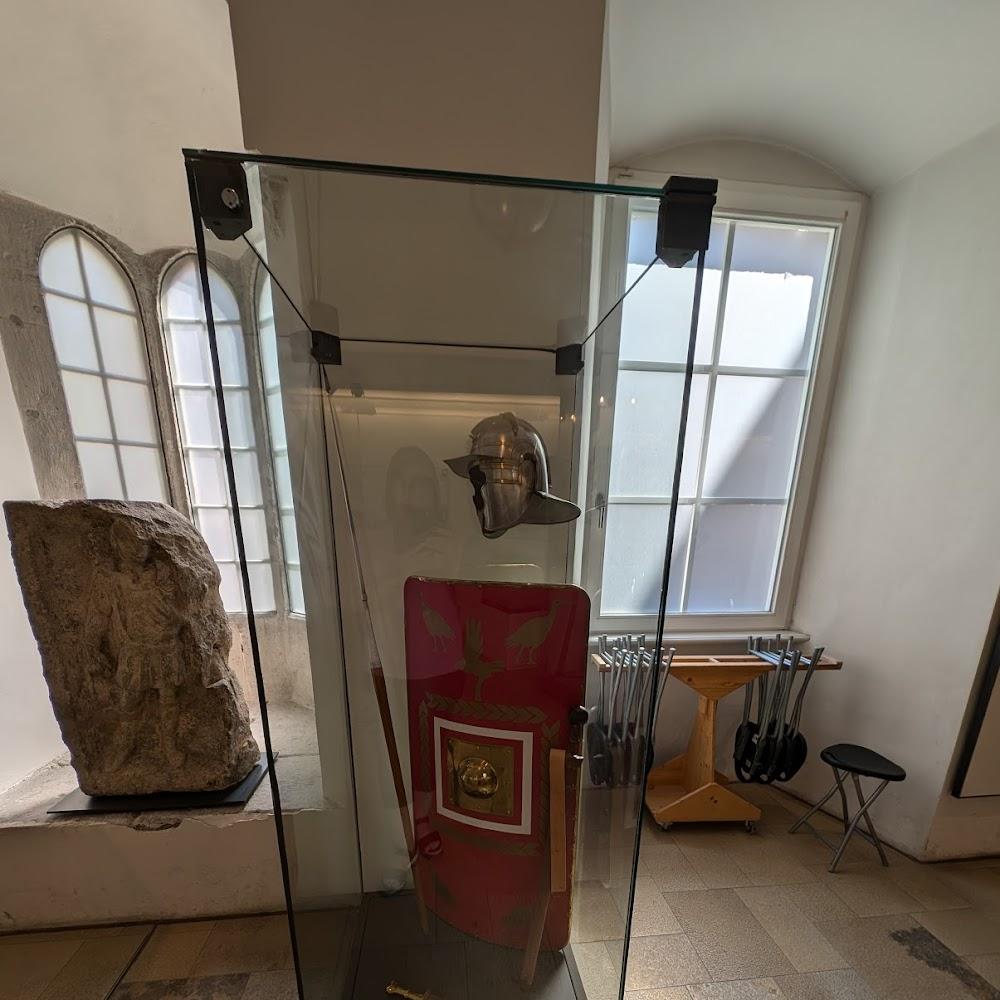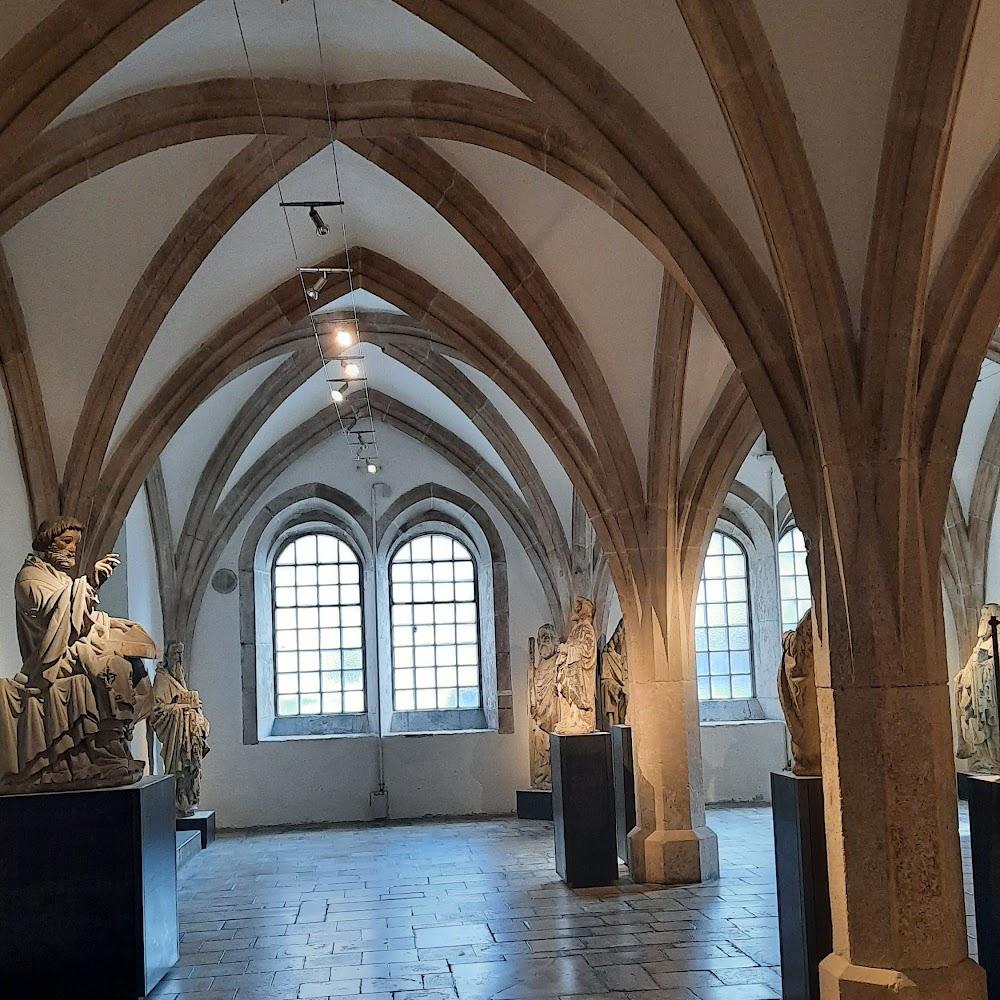Regensburg Historical Museum: A Journey Through Time
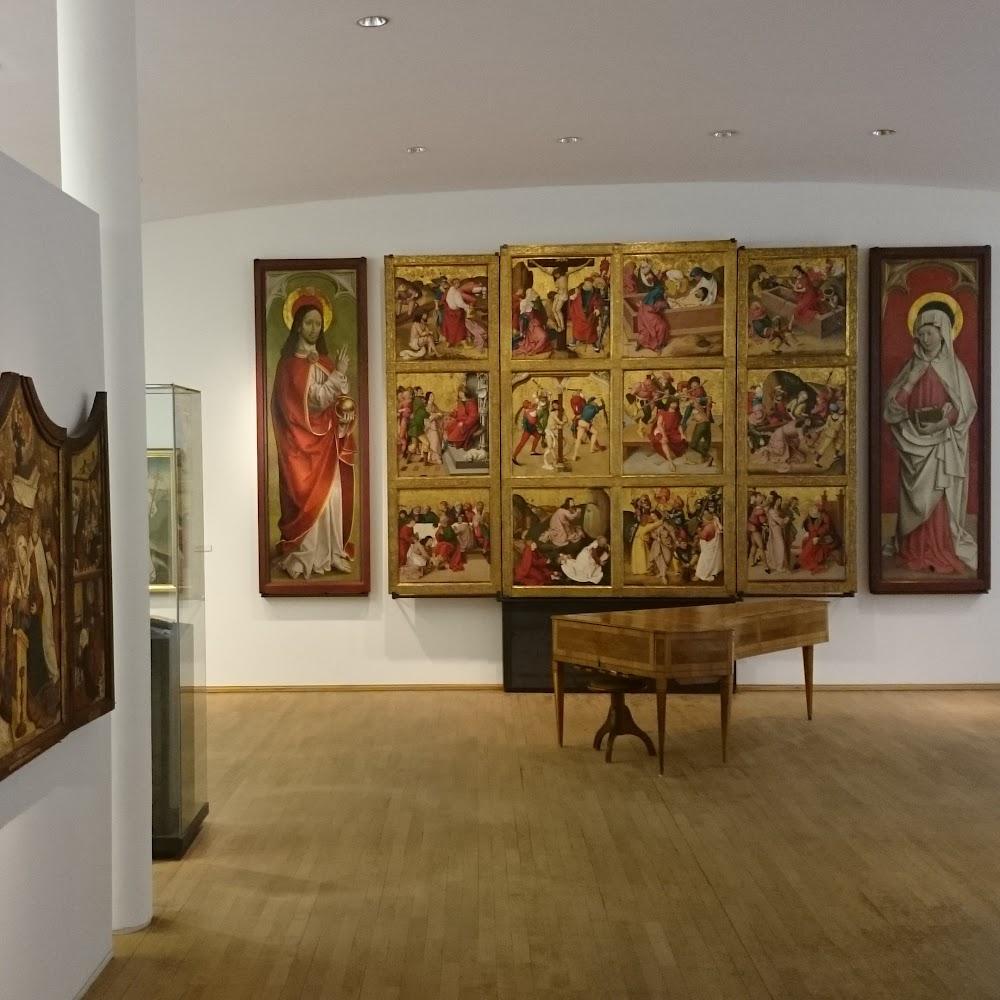
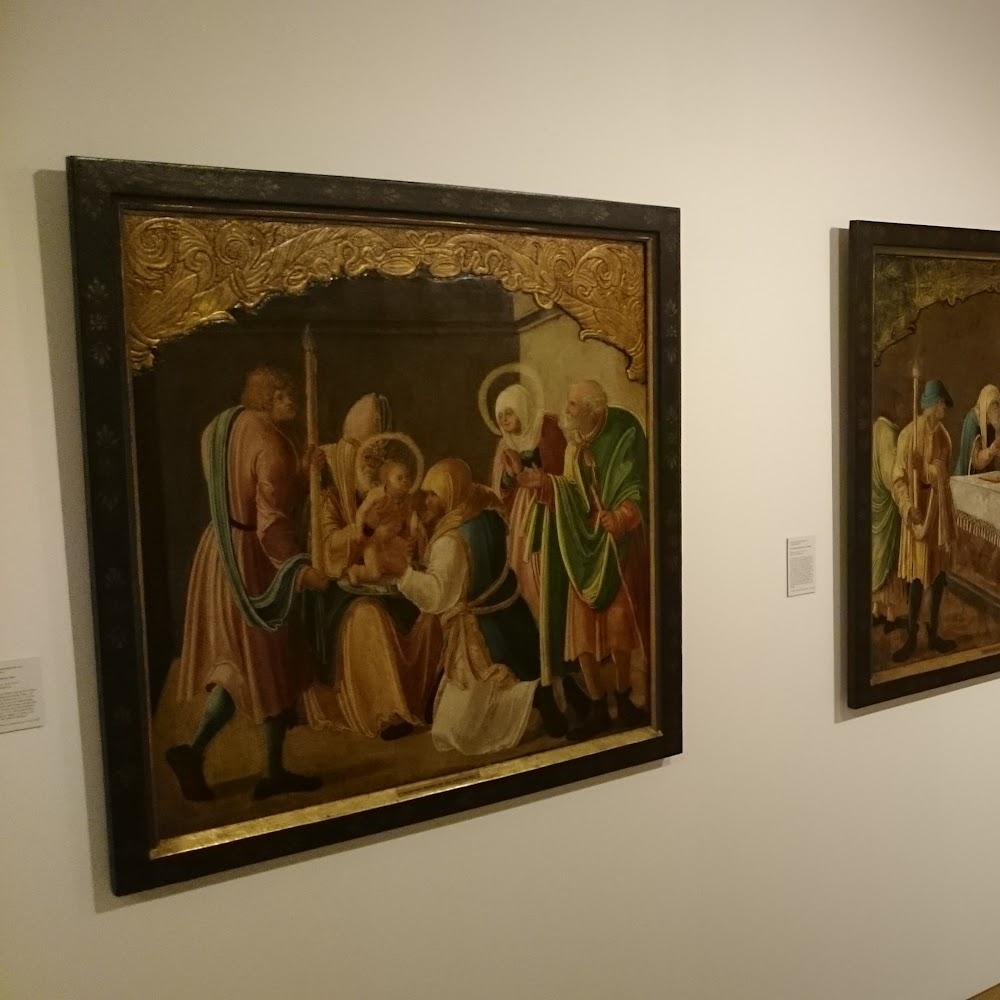
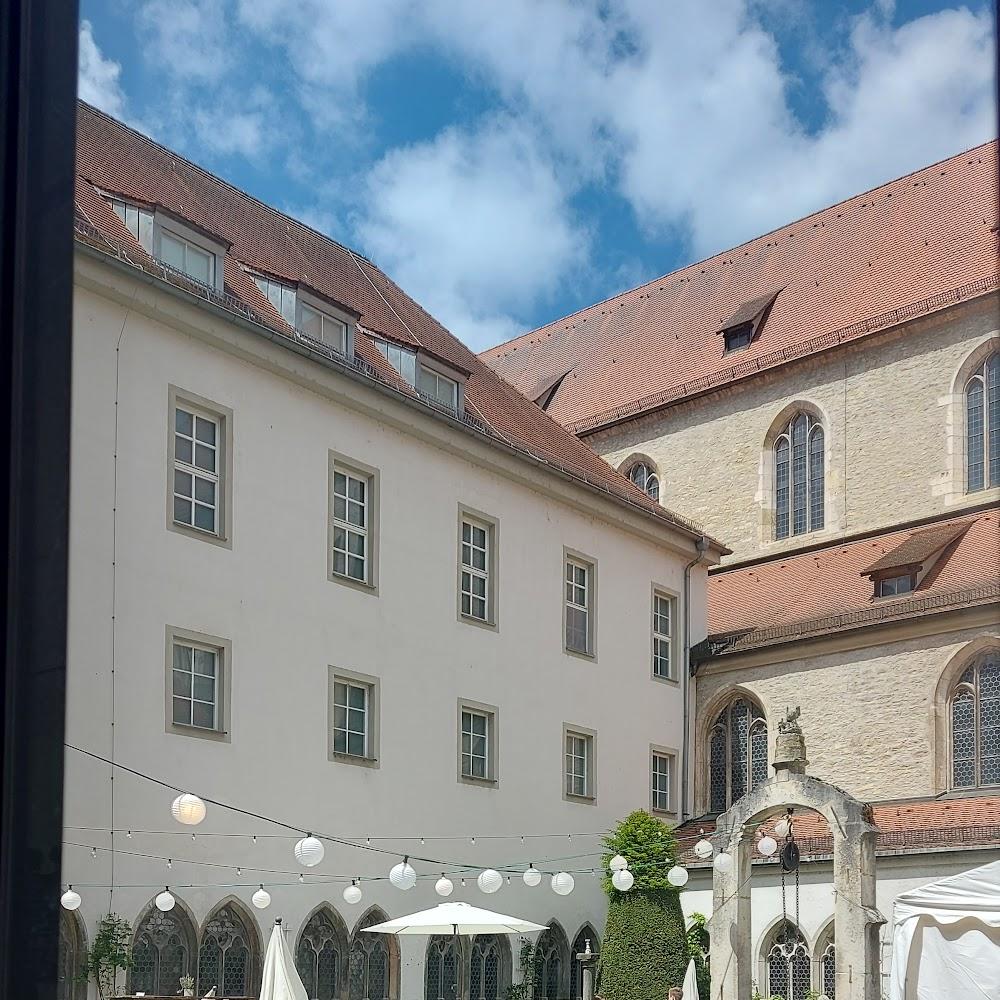
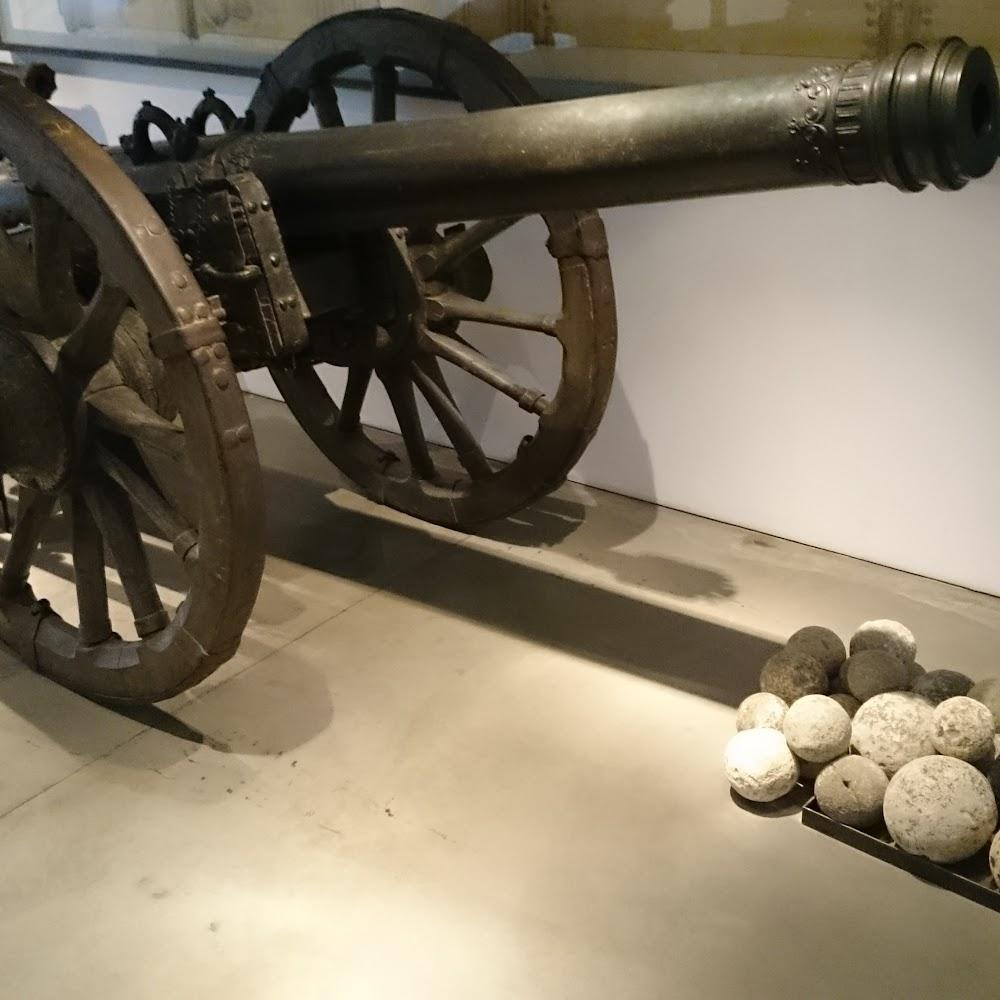
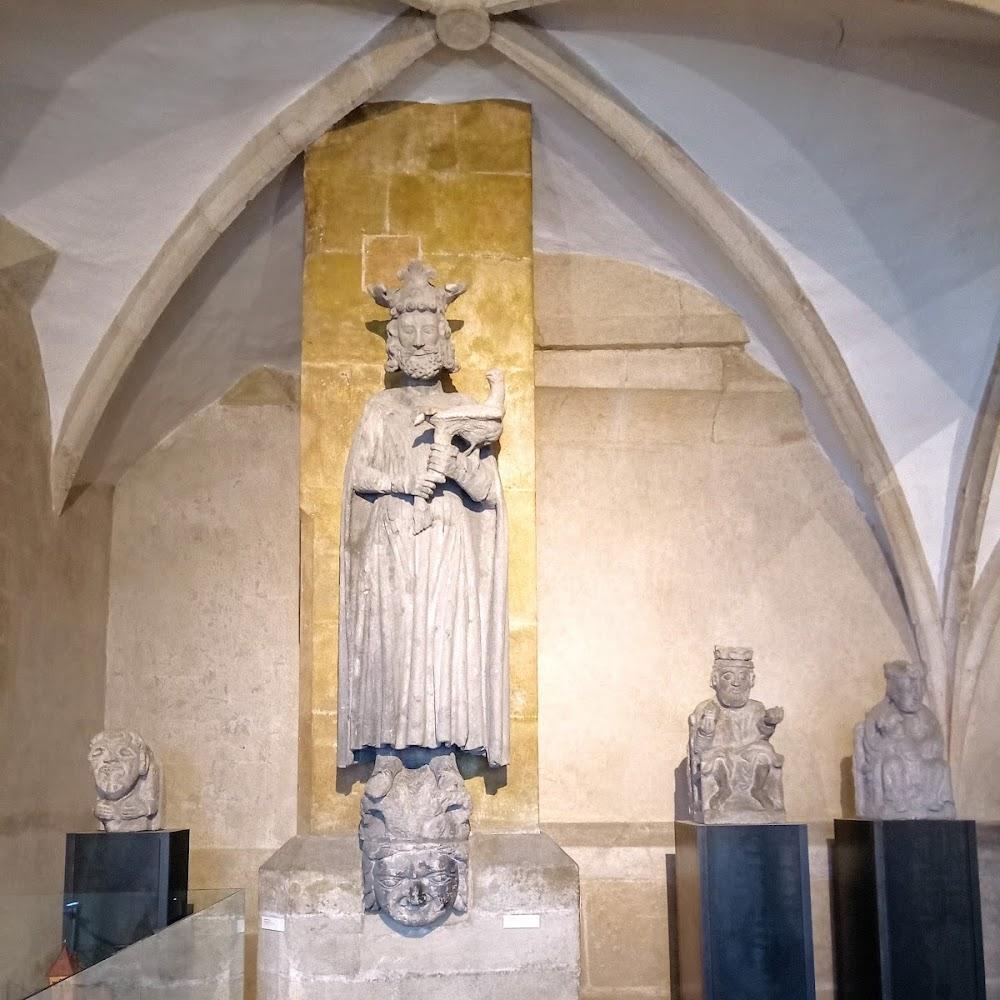
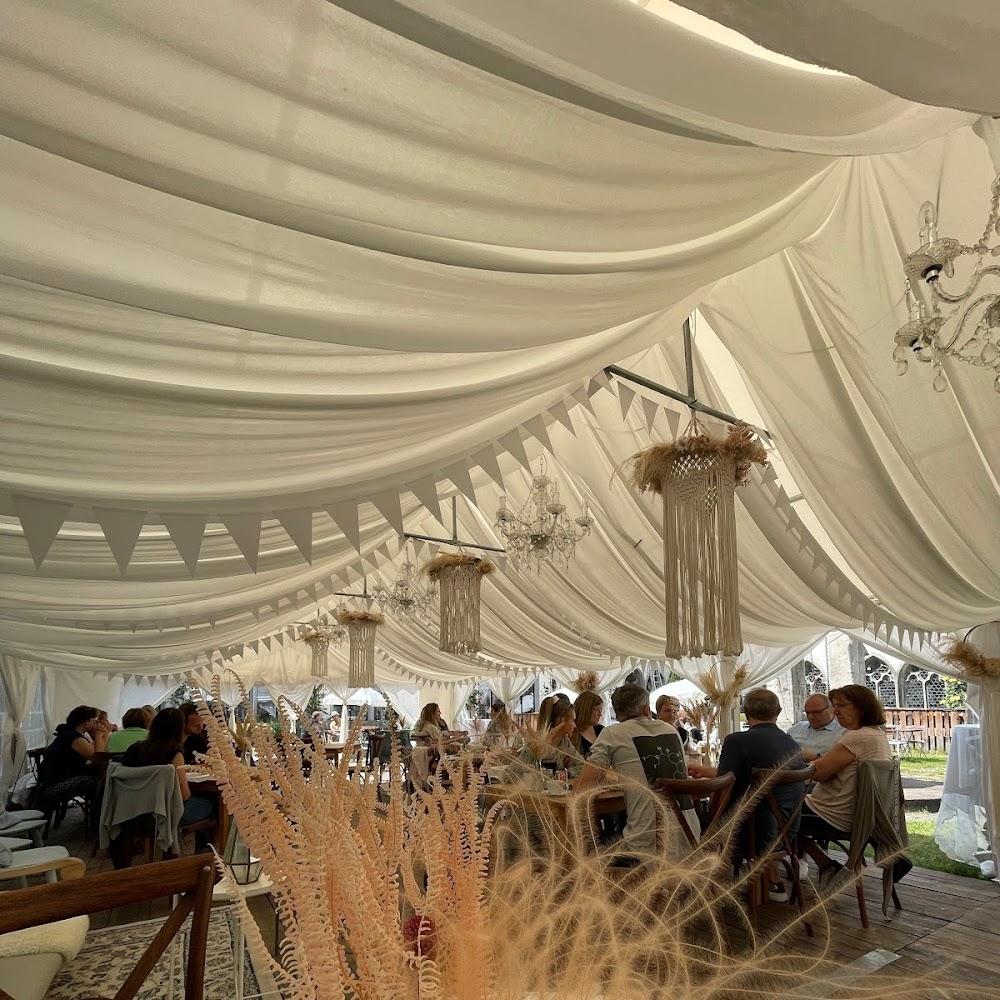
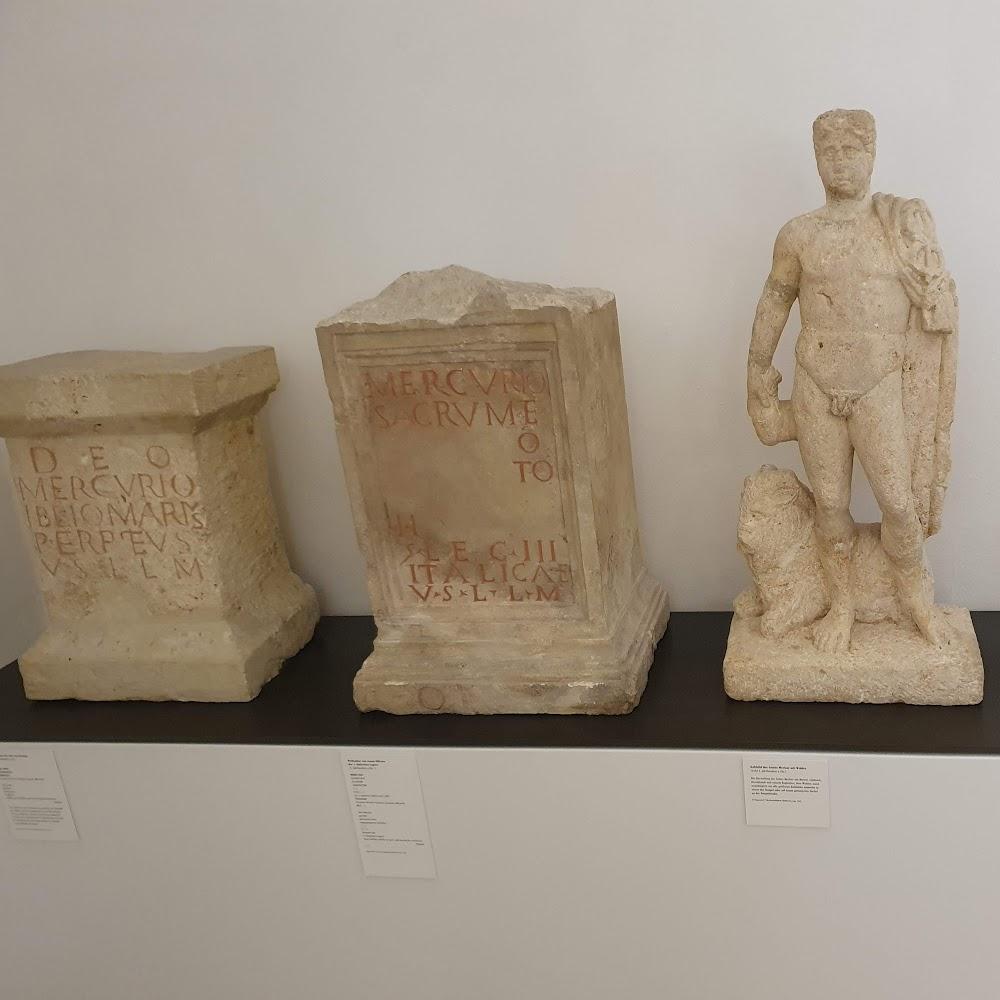
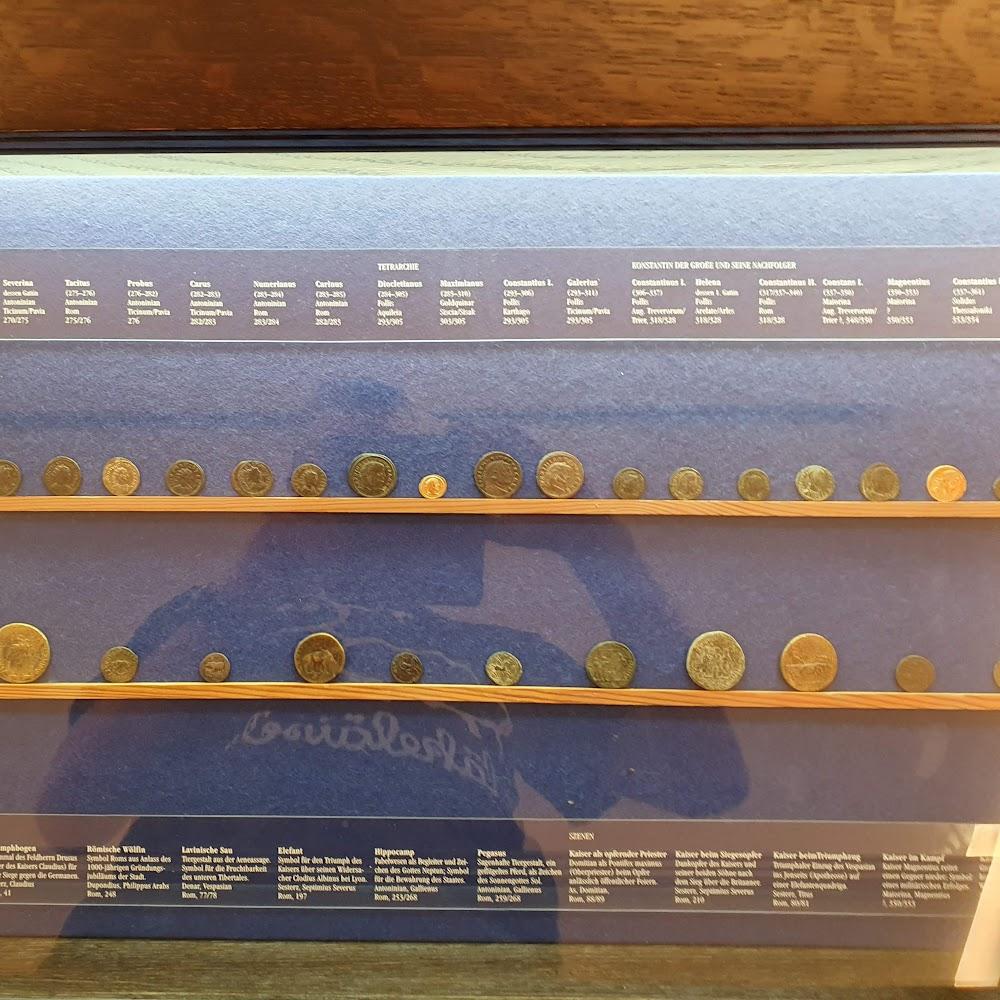
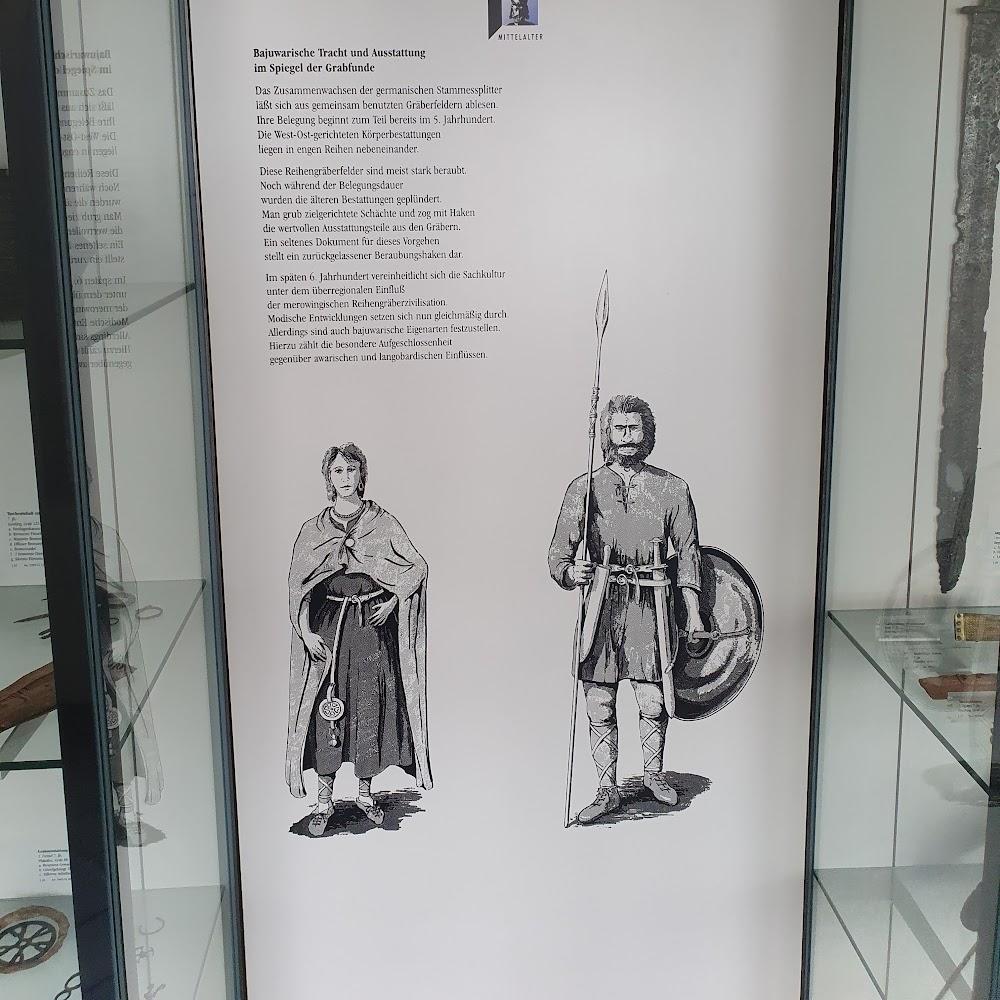
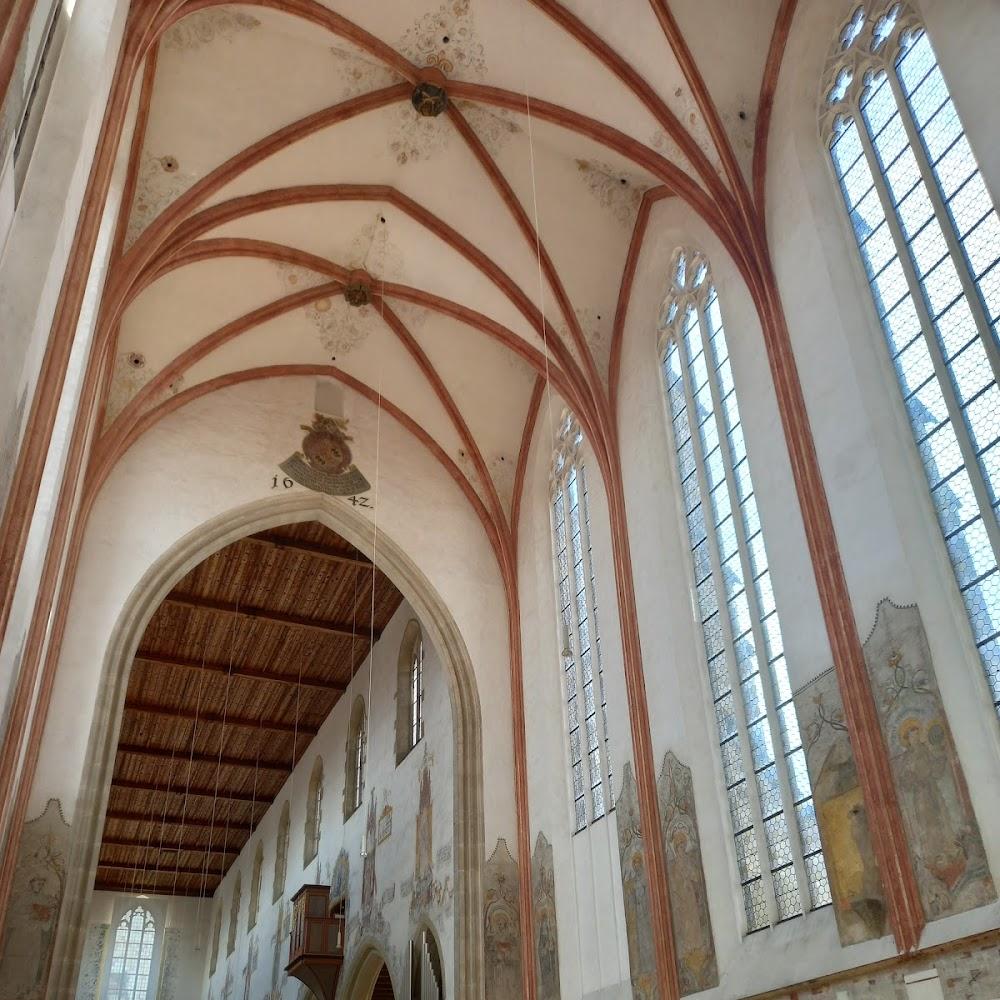
A Must-Visit in Regensburg
The Regensburg Historical Museum is a must-see for anyone visiting Regensburg. It's housed in a former monastery, and its three floors chronicle the city's history from its earliest times through the Roman period up to the Middle Ages. Visitors will find authentic exhibits, interactive elements, and a church building with frescoes. The museum is especially notable for its collection of artifacts from the Stone Age, Celtic and Roman periods, and the medieval era.
A Journey Through Time
The museum is divided into three floors, each focusing on a different period in Regensburg's history. The ground floor covers the Roman era and the prehistoric era, with a particular focus on the history of the Germanic-Roman people and their relationship with the city. On the first floor, visitors can learn about medieval life in Regensburg. The second floor features a collection of Christian relics and paintings from Regensburg artists, also from the medieval ages.
Something for Everyone
Whether you're a history buff, an art enthusiast, or simply looking for a unique experience, the Regensburg Historical Museum has something to offer. The exhibits are well-curated and informative, and the museum also features a charming café and a stunning church building that's open from Easter to October. The museum is a wonderful way to spend a few hours exploring the rich history of Regensburg.
A Few Tips for Your Visit
The museum's signage and displays are only in German, so visitors who don't speak the language may want to consider using a translation app or audio guide. Although some visitors found the lack of English translations to be a drawback, many found the exhibits themselves to be engaging and informative. Several visitors recommend the museum's cafe for a break. And keep in mind that on the first Sunday of the month, admission is free!
The Roman Era and Beyond: Exploring Regensburg's Past
Step back in time at the Regensburg Historical Museum, where you can explore the history of this captivating city, spanning from the prehistoric era to the Middle Ages.
The museum is housed within a former Gothic monastery, adding a layer of historical charm to your experience. As you wander through the exhibits, you'll be greeted by a treasure trove of artifacts, from Roman-era relics to medieval paintings.
The ground floor dives deep into the Roman era and prehistoric times. Visitors can examine fascinating artifacts and even see a model of a Roman house complete with floor heating.
The first floor takes you on a journey through medieval life in Regensburg. You can discover how the city thrived, learning about the daily lives of its inhabitants, as well as its cultural and religious influences.
The second floor showcases a collection of Christian relics and paintings from Regensburg artists, offering a glimpse into the city's rich religious heritage. This floor also houses a beautiful church, open to visitors from Easter to October.
While most signage and exhibits are only in German, you can enhance your experience by asking for an audio guide.
Visitors have repeatedly praised the museum's extensive collection and the captivating presentation of artifacts. Some highlights include a model of a Roman house with floor heating, a beautiful gothic ceiling, and a tapestry collection.
The museum also boasts a charming café, offering a delightful respite after exploring the rich tapestry of history. Visitors have raved about the service and the delicious "kaiserschmarren," a traditional Austrian pancake dessert.
If you're looking for a captivating journey into the history of Regensburg, this museum is a must-see.
History of Regensburg: A Journey Through Time
The Regensburg History Museum is a must-visit for anyone interested in the rich history of this Bavarian city. Housed in a former Gothic monastery, it offers a captivating glimpse into the past, spanning from prehistoric times to the Middle Ages.
A Glimpse Into the Past: Prehistoric and Roman Eras
Journey back in time on the ground floor, where you'll find exhibits showcasing the prehistoric and Roman eras. Discover artifacts and models that reveal the lives of the Germanic-Roman people and their connection to the city. Explore the fascinating history of the early settlers of Regensburg, including a model of a Roman house with floor heating.
Medieval Life in Regensburg: A World of Faith and Craft
Ascend to the first floor and immerse yourself in the medieval life of Regensburg. Explore exhibits detailing the daily lives of the city's inhabitants, their customs, and their relationship with their surroundings. This floor offers a unique perspective on medieval Regensburg.
Spiritual Treasures and Artistic Heritage: The Second Floor
The second floor houses a collection of Christian relics and paintings by Regensburg artists from the medieval era. Admire the marvelous painting of Albrecht Altdorfer's “The Two Johns,” a highlight of the museum.
A Tranquil Sanctuary: The Monastery Church
The museum's former monastery church, which is open to visitors from Easter to October, offers a serene escape. Admire the impressive Gothic ceiling and the beautiful frescoes decorating the church walls.
A Note for English Speakers
While the museum boasts authentic exhibits and interactive elements, be aware that all signage and displays are in German. However, audio guides are available, and if you happen to know someone who speaks German, it's a good idea to bring them along!
You can also use Google Translate, although it may take a little more time and effort.
Cafe and Cuisine
Take a break from exploring the museum's historical treasures and enjoy a delicious meal or a cup of coffee in the cafe located within the museum. Many reviewers recommend this cafe, especially the kaiserschmarren.
This museum provides a valuable and comprehensive journey through the history of Regensburg. It's an excellent way to experience the rich heritage of this ancient city and learn about its evolution over the centuries.
The Germanic-Roman Connection
The museum's ground floor delves into the fascinating history of the Germanic-Roman people and their connection to the city of Regensburg. Here, you can explore the Roman era and prehistoric era, taking a journey back in time to see how these cultures interacted and shaped the city's early history. This is a unique opportunity to understand the complex relationship between these two groups, a relationship that is often overlooked but profoundly impactful on the region's development.
A standout piece in this section is a model of a Roman house with floor heating. It provides a glimpse into the daily lives of Romans who lived in Regensburg, allowing visitors to imagine what their homes looked like and how they lived.
Reviews emphasize the museum's dedication to showcasing the historical relationship between the Germanic and Roman people. Visitors are impressed by the comprehensive approach, which encompasses both the prehistoric and Roman eras, highlighting the rich tapestry of Regensburg's early history.
Medieval Artifacts and Everyday Life
The medieval era comes alive on the first floor. This section offers a glimpse into the everyday life of Regensburg's inhabitants during this period. Visitors can marvel at the beautiful gothic ceiling of the monastery, and explore a section featuring tapestries. A model of a Roman house with floor heating showcases the technological innovations of the time.
The museum has a huge collection of medieval artifacts, including stone tombs, which are displayed in a chapel adjoining the museum. However, all of the text at the museum is in German, making it tricky for English speakers to fully appreciate the artifacts without an audio guide or translation assistance.
Many visitors have commented on the captivating atmosphere of the museum, with some describing it as a "must-go" for history enthusiasts. The museum's medieval vibes extend to a charming café, where guests can enjoy a delicious breakfast or lunch while absorbing the historical ambience.
History of Regensburg
The Regensburg History Museum is a treasure trove of artifacts and information spanning millennia. It's housed in a former church, a gothic monastery, and is divided into three floors, each covering a different era in Regensburg's rich history.
The Early Years: Stone Age, Celtic, and Roman
Explore the museum's ground floor and journey back in time, starting with the Stone Age. You'll see fascinating exhibits about the Germanic-Roman people who played a pivotal role in the city's development. The Roman period is well-represented, with a model of a Roman house featuring floor heating. This section offers a glimpse into the everyday life of people during the Roman Empire.
Medieval Life in Regensburg
On the first floor, delve into the medieval history of Regensburg. Discover artifacts and displays showcasing the daily life of residents during this era. You'll also find fascinating information about the city's growth and development during this time.
Medieval Art & Christian Relics
The second floor holds a captivating collection of Christian relics and paintings created by Regensburg artists. These works offer a unique insight into the religious beliefs and artistic practices of the medieval era. This section also features a church which is open to the public from Easter till October.
The museum is a must-visit for anyone interested in the history of Regensburg. Visitors rave about the numerous beautiful artifacts, the well-preserved church area, and the captivating Roman exhibits. However, it's worth noting that all signs and displays are in German, so you may want to consider asking for an audio guide or bringing along a handy translation app.
A Journey Through Time: Exploring the Regensburg Historical Museum
The Regensburg Historical Museum, housed in a former 13th-century church, provides an immersive journey through the city's fascinating history. From the Stone Age to the 19th century, you'll discover the rich tapestry of art, culture, and everyday life in Regensburg and Bavaria.
Unveiling the Past: Ground Floor
Step onto the ground floor and be transported to the prehistoric and Roman eras. Here, you'll encounter captivating artifacts, including a model of a Roman house complete with floor heating, showcasing the ingenuity of the ancient world. The ground floor also delves into the history of the Germanic-Roman people and their connection to the city, offering valuable insight into the region's complex past.
Medieval Regensburg: Life and Legacy
Ascending to the first floor, you'll step into the vibrant medieval world of Regensburg. Discover the captivating exhibits that showcase the daily lives of the city's inhabitants, from its craftsmanship to its bustling trade routes. The medieval era comes alive through artifacts and displays that reveal the intricate details of life during this period.
A Sacred Heritage: Second Floor
The second floor holds a treasure trove of Christian relics and paintings created by Regensburg artists during the medieval ages. Admire the exquisite artistry and learn about the profound impact of religion on the city's history and culture. Be sure to visit the church, which is open from Easter to October, for a truly enriching experience.
The museum's extensive collection is a testament to the enduring legacy of Regensburg. While the descriptions are primarily in German, audio guides are available for a more comprehensive understanding. Don't miss out on the opportunity to explore this gem, offering a unique perspective on the city's past, even if your German skills are limited. And be sure to stop by the museum's cafe for a delicious kaiserschmarren, a traditional Bavarian treat.
History of Regensburg: A Journey Through Time
The History Museum of Regensburg is a must-visit for anyone interested in the city's rich and fascinating past. Housed within a former 13th-century church, this museum is a treasure trove of artifacts and exhibits that transport you through centuries of history. While the museum covers Regensburg's history from the Stone Age to the 19th century, the highlights are the Roman and Medieval sections.
The Roman and Prehistoric Eras
The ground floor focuses on the Roman era and the prehistoric period. You'll find an intriguing model of a Roman house featuring floor heating, giving you a glimpse into Roman life. The exhibits explore the Germanic-Roman interactions and Regensburg's relationship with the Roman Empire. These exhibits provide a captivating look into the city's beginnings.
Medieval Regensburg
The first floor showcases the Medieval era in Regensburg. Here, you can explore the daily life of the city's inhabitants, and learn about their traditions and customs. A model of the medieval bridge and surrounding buildings adds another dimension to your understanding of this era.
Christian Relics and Art
The second floor features a collection of Christian relics and paintings by Regensburg artists from the medieval era. These include an awe-inspiring painting by Albrecht Altdorfer, “The 2 Johns.” Visitors can also explore the former church, now used for concerts and events, which is part of the museum. However, it's only open from Easter to October.
A Few Tips for Visitors
The museum's extensive collection of artifacts will leave you awestruck. However, keep in mind that all signage and displays are in German. This is a museum that is well-suited for history buffs and anyone interested in the origins of Regensburg, but the lack of English translations can be a challenge. You might want to consider bringing a translation app or asking for an audio guide. The entrance fee is a mere €5 for adults, and free entry for students is available. You'll find the museum located in an old Gothic monastery, so there's plenty of history to soak up.
The Regensburg Historical Museum: A Journey Through Time
The Regensburg Historical Museum, housed in a former 13th-century church, takes you on a captivating journey through the city's history, from its prehistoric beginnings to the 19th century. The museum is spread across three floors, each dedicated to a specific period: the ground floor showcasing the Roman and prehistoric eras, the first floor illuminating medieval life in Regensburg, and the second floor offering a collection of Christian relics and paintings by Regensburg artists from the medieval ages.
Visitors are greeted with numerous astonishingly beautiful artifacts and exhibits. On the ground floor, you'll encounter an excellent display of life during the Roman Empire, including a fascinating model of a Roman house with floor heating. This floor also delves into the history of the Germanic-Roman people and their connection to the city. Moving to the first floor, you'll find a detailed look at medieval life in Regensburg, while the second floor showcases a remarkable collection of sacred art and paintings, including a marvelous piece by Albrecht Altdorfer, "The 2 Johns."
The museum also features a church, open to visitors from Easter to October. Though the museum itself is located within the grounds of a former gothic monastery, it's easy to follow the rich history of Regensburg throughout the entire museum.
The museum offers an immersive experience with authentic exhibits and interactive elements, including media presentations and a church building adorned with frescoes. While all the texts and signage are in German, audio guides are available to enhance your understanding.
The Regensburg Historical Museum is a must-visit for those interested in history and art. The entry fee is only €5, and admission is free on the first Sunday of every month.
The Regensburg History Museum: A Journey Through Time
Step back in time and explore the rich history of Regensburg at this fascinating museum, housed within the walls of a former Gothic monastery. Visitors rave about the museum's expansive collection, spanning from the Stone Age to the 19th century, showcasing a range of artifacts and exhibits that tell the captivating story of this historic city.
Delving into the Past
The museum is organized over three floors, each highlighting a different period. The ground floor takes you on a journey through prehistory and the Roman era, offering a glimpse into the lives of the Germanic-Roman people and their connection to Regensburg. You can marvel at a model of a Roman house complete with underfloor heating, a testament to the ingenuity of the Romans.
Ascend to the first floor and step into the world of medieval Regensburg. This floor provides insights into the daily lives of the city's inhabitants during this era, showcasing an array of artifacts and displays that bring the past to life.
The second floor is dedicated to the city's religious heritage, featuring a collection of Christian relics and paintings created by Regensburg artists from the medieval period. Adjacent to the museum, there's a church that can be visited from Easter until October, adding an extra layer of historical significance to the museum experience.
A Treasure Trove of Artifacts
One thing that consistently impresses visitors is the stunning collection of artifacts on display. From ancient tools and weaponry to delicate jewelry and intricately carved tombstones, each piece tells a unique story about the people who lived in Regensburg centuries ago. The sheer beauty and craftsmanship of these artifacts are often remarked upon by visitors.
A Must-Visit for History Enthusiasts
Reviewers consistently emphasize that this museum is a must-visit for anyone interested in history. Many describe it as an unexpectedly good museum, filled with surprises and intriguing exhibits that offer a fresh perspective on the past. The museum's combination of authentic artifacts, interactive elements, and historical context makes it a truly engaging experience.
A Note About Language
One thing to keep in mind is that all signage and displays are in German. While some visitors found their Google Translate app helpful, others suggest asking for an audio guide to enhance their understanding. It's a good idea to plan ahead and consider your German language skills before visiting.
Beyond the Exhibits
The museum's charm extends beyond its exhibits. Visitors also praise the friendly and knowledgeable staff, as well as the cafe located within the museum. The cafe is known for its delicious cakes and the option to enjoy a meal outdoors in the former monastery courtyard, making it a perfect spot to relax and soak up the ambiance of the museum's historical setting.
The Regensburg Historical Museum: A Journey Through Time
The Regensburg Historical Museum is a treasure trove of history, housed within the walls of a former 13th-century church. It's a journey through time, exploring the city's evolution from the prehistoric era through the Roman period and into the Middle Ages. You'll find yourself captivated by the authentic artifacts on display, the interactive elements (mostly media), and the awe-inspiring church building adorned with frescoes and sacral art.
A Journey Through Time
The museum is divided into three floors, each one taking you deeper into the history of Regensburg. The ground floor delves into the prehistoric and Roman eras, showcasing the fascinating history of the Germanic-Roman people and their relationship with the city. As you ascend to the first floor, you'll find yourself immersed in the medieval life of the people of Regensburg. The second floor features a captivating collection of Christian relics and paintings from Regensburg artists, all from the medieval period.
Hidden Gems: The Church and Café
The museum also houses a church that's open to visitors from Easter to October. This stunning Gothic church, part of the old monastery, adds another layer of intrigue to your experience. If you find yourself needing a break, the café inside the museum is a must-see. Visitors rave about the delicious Kaiserschmarren (a traditional Austrian pancake dish), the outstanding service, and the café's charming atmosphere. They even suggest making a special trip just for a drink and a treat.
Practical Considerations
One thing to keep in mind: all the signage and displays are in German. If you're not fluent in German, you might want to consider asking for an audio guide or bringing your trusty Google Translate app.
A Must-See for History Buffs
The Regensburg Historical Museum offers a comprehensive exploration of the city's rich history, and it's a must-visit for anyone with even a passing interest in the subject. Reviewers consistently praise the museum's vast collection of artifacts, its engaging displays, and its fascinating insights into the lives of Regensburg's inhabitants throughout the ages. Whether you're a history buff or simply looking for a unique and memorable experience, this museum is sure to captivate and inspire.
History of Regensburg
This museum is a fantastic way to spend a few hours in Regensburg, especially if you are interested in history. Many of the exhibits are originals, with some interactive elements, and the museum is housed in a former Gothic monastery. The museum is divided into three floors, each focusing on a different era of Regensburg’s history.
The Ground Floor: A Journey Through Time
The ground floor features a collection of artifacts from the prehistoric and Roman eras. Learn about the Germanic-Roman people and their connection to the city. You can also check out a model of a Roman house with floor heating, which is pretty cool.
The First Floor: Medieval Life in Regensburg
The first floor is dedicated to the medieval period, giving visitors a glimpse into the lives of the people who lived in Regensburg during this time. There are some great exhibits about the city's life, including a beautiful Gothic ceiling. You can also see an interesting tapestry.
The Second Floor: Religious Art and Relics
The second floor houses a collection of Christian relics and paintings from Regensburg artists of the medieval period. The museum also includes a church that’s open from Easter to October, making for an interesting stop during your visit.
Tips for Your Visit
Most of the information in the museum is in German, so make sure to bring a translation app or ask for an audio guide if you only know English. The museum is worth seeing even if you don’t speak the language, and don’t worry about getting lost. Admission is 5 euros, with free entry on the first Sunday of the month.
A café is located on the ground floor. It’s a must-see for some delicious kaiserschmarren and a break after exploring the museum.
The Regensburg History Museum: A Journey Through Time
Step into the Regensburg History Museum and prepare to be transported through centuries of history. This captivating museum, housed within a former Gothic monastery, is a treasure trove of artifacts, models, and art. It chronicles the city's rich past, from its prehistoric beginnings to its medieval heyday.
A Trip Through Time
The museum is organized into three distinct floors, each focusing on a different era. On the ground floor, explore the prehistoric and Roman eras, delving into the fascinating history of the Germanic-Roman people and their connection to Regensburg. This level showcases a captivating model of a Roman house featuring floor heating, a testament to the advanced engineering of the time.
Ascend to the first floor to discover the medieval life of the people of Regensburg. The exhibits here offer a glimpse into their daily routines, their crafts, and their social structures. You'll encounter breathtaking Gothic ceilings and a tapestry that weaves tales of the past.
The top floor houses a collection of Christian relics and paintings from Regensburg artists, all from the medieval era. While the church portion of the museum is only open from Easter to October, you'll find the entire museum to be an enriching exploration of Regensburg's history.
A Must-See for History Buffs
The Regensburg History Museum is a must-visit for anyone interested in the city's past. The numerous artifacts on display, some interactive and others showcasing traditional craftsmanship, are a testament to the rich heritage of the region. Many visitors find themselves spending hours within the museum's captivating walls.
While the museum's signage is exclusively in German, audio guides are available, and the helpful staff are happy to assist visitors. Despite the language barrier, many visitors express their awe at the museum's collection and its ability to transport them to different eras.
More Than Just History
The museum is a truly immersive experience. Beyond the historical exhibits, the museum houses a delightful cafe within its walls. The cafe serves delicious treats and drinks, offering a welcome respite from the museum's captivating journey through time. This cafe is a popular spot for visitors and is often praised for its delicious kaiserschmarren and its medieval ambiance.
Many reviewers point out the museum's exceptional price, a mere 5 euros, with free admission on the first Sunday of the month. This accessibility makes it a perfect destination for families and those on a budget.
The Regensburg History Museum: A Journey Through Time
The Regensburg History Museum is housed in a former gothic monastery and church, dating back to the early 13th century. It offers visitors a glimpse into the rich history of Regensburg and Bavaria, stretching from the Stone Age to the 19th century. With three main exhibitions focusing on prehistory, the Roman era, and the Middle Ages, the museum provides a captivating exploration of the region's past.
A World of Artifacts
The museum boasts an impressive collection of artifacts, showcasing the diverse cultures and periods that have shaped Regensburg. From prehistoric tools and Roman ceramics to medieval tapestries and religious paintings, each room holds treasures that transport visitors back in time.
A Step Back in Time: The Roman Era
The ground floor is dedicated to the Roman era, revealing fascinating insights into the city's Roman past. A highlight of this section is a meticulously crafted model of a Roman house featuring a floor heating system. The museum also delves into the lives of the Germanic-Roman people, their interactions with the city, and their impact on its development.
Medieval Life and Beyond: The First and Second Floors
Ascending to the first floor, visitors encounter a vivid portrayal of medieval life in Regensburg. The exhibits showcase the city's social structures, craftsmanship, and daily routines.
The second floor takes visitors on a journey through Regensburg's rich artistic and religious heritage. This level features a captivating collection of Christian relics and paintings by Regensburg artists from the medieval ages. The museum also houses a church, open to visitors from Easter to October.
Immersive Experience and Practical Information
The Regensburg History Museum offers a comprehensive and engaging experience. While the signage and text are exclusively in German, the museum provides audio guides for visitors who speak English. The museum also offers free admission for students and on the first Sunday of every month.
The museum's cafe is a popular destination, offering delicious breakfast and lunch options. With its medieval ambiance and beautiful courtyard, it's a perfect place to unwind after exploring the museum's rich exhibits.
The History Museum of Regensburg: A Journey Through Time
The History Museum of Regensburg is housed within a former 13th-century church and provides a comprehensive journey through the city's history, encompassing the Stone Age to the 19th century. Spread across three floors, the museum offers a fascinating look at the development of Regensburg, from its prehistoric roots to its medieval glory.
Exploring the Past: The Ground Floor
The ground floor delves into the Roman era and the prehistoric period. Visitors can explore the lives of the Germanic-Roman people, their relationship with the city, and their influence on its development. A captivating model of a Roman house with floor heating provides a glimpse into daily life during this period.
Medieval Marvels: The First Floor
Ascending to the first floor, visitors are transported into the medieval era. This section sheds light on the lives of Regensburg's inhabitants during this period, offering a glimpse into their daily routines and customs. The captivating architecture of a Gothic ceiling creates a sense of awe and wonder, transporting visitors back to the Middle Ages.
A Tapestry of Faith: The Second Floor
The second floor is dedicated to a collection of Christian relics and paintings by Regensburg artists from the medieval ages. The museum's church, open only from Easter to October, provides a serene space for reflection and appreciation. The breathtaking frescoes and sacred art on display offer a unique perspective on religious art and culture during this period.
A Must-Visit for History Enthusiasts
The Regensburg History Museum has received numerous positive reviews from visitors, who have praised its impressive artifacts, engaging exhibits, and the overall historical ambiance. While the signage and displays are exclusively in German, visitors can enhance their experience with an audio guide. The museum's café, with its medieval vibe, provides a delightful stop for a break or a delicious meal.
Conclusions: A Journey Through History
The Regensburg Historical Museum is a journey through time, taking visitors from the earliest settlements to the Middle Ages. With its exhibits spanning millennia, the museum offers a captivating glimpse into the rich history of Regensburg and its surrounding region.
A Museum of Many Eras
The museum, housed in a former Gothic monastery, is spread across three floors. The ground floor delves into the prehistoric and Roman eras, showcasing artifacts that bring to life the lives of the Germanic-Roman people and their connection to the city. On the first floor, visitors can explore the medieval life of Regensburg's inhabitants, gaining insights into their daily routines and societal structures. The second floor features a fascinating collection of Christian relics and paintings from Regensburg artists, also dating back to the medieval era.
Must-See Highlights
Reviews highlight several must-see elements within the museum. The Roman section stands out with its model of a Roman house featuring underfloor heating, providing a vivid representation of life during the Roman Empire. Another captivating exhibit is the beautiful Gothic ceiling in the former monastery, offering a glimpse into the architectural prowess of the era.
A Place for All
The museum offers a captivating experience for visitors of all ages and interests. Families with children will find the Roman and Medieval sections particularly engaging, while art enthusiasts will be drawn to the collection of religious paintings on the second floor.
Exploring Further
For those seeking a deeper understanding of Regensburg's history, the museum offers English audio guides for both the Roman and Medieval sections. The museum also boasts a delightful cafe, ideal for a break or a leisurely lunch.
A Note on Accessibility
While reviews praise the museum's overall accessibility, they also highlight the absence of English translations on exhibit displays. For English-speaking visitors, a translation app or an audio guide is recommended. The museum's cafe, however, has a strong track record for friendly service, offering delicious dishes, including a tempting selection of breakfast options.
Overall, the Regensburg Historical Museum offers a unique opportunity to immerse oneself in the rich history of the city and the region. While language barriers might present a challenge for some, the museum's captivating exhibits, friendly staff, and charming atmosphere make it a worthwhile destination for those interested in history, art, and culture.
FAQ
What are the main periods covered by the Regensburg Historical Museum?
The Regensburg Historical Museum covers the history of Regensburg from its prehistoric origins through the Roman period and up to the Middle Ages.
What are the highlights of the museum?
Some of the highlights include authentic exhibits on display, interactive elements, a church building with frescoes, sacral art, a model of a Roman house with floor heating, and a beautiful Gothic ceiling in the monastery section. Additionally, the museum houses a marvelous painting by Albrecht Altdorfer: The 2 Johns.
Is the museum accessible to English speakers?
While most of the signage and displays are in German, audio guides are available. It is also recommended to use translation apps or bring someone who speaks German.
What is the admission fee for the Regensburg Historical Museum?
The entrance fee is 5 euros for adults and free for students. Additionally, entry is free on the first Sunday of the month.
What are the opening hours of the Regensburg Historical Museum?
The museum is open daily, but hours may vary. It is best to check the museum website or contact them directly for the most up-to-date information.
